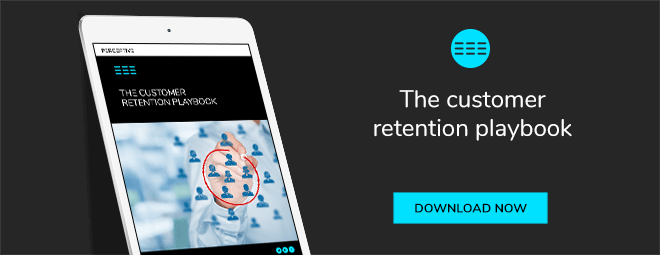Unfortunately, it's not as easy as providing the best product or service on the market, you still have to fight to survive, let alone become the market leader in your industry. In fact, there is one critical success factor to high customer retention rates, read about it here.
The first step to becoming a business that retains a high amount of its customers is becoming more knowledgeable about them. This is easy to do when you're getting customer feedback and the right (actionable) insights to build your customer retention strategy. Once you can action those insights you'll experience longer customer life cycles and more revenue for your business.
Bulletproof retention strategy?
Sounds simple, but as we all know, life is messy. Things get in the way of even the most bulletproof retention strategy. We speak to many companies every day, and throughout the years we've learned that even the most successful companies make mistakes. Make sure you're not making these mistakes. We've got some ideas about how to avoid them, so chat to us if you want to get more insider tips on retention.
In the mean time, if you're doing these four things you're not doing the best job at retaining your customers:

1. Neglecting to make your customers feel special
Are you making your customers feel special? If not, you might not have given them enough reason to stay. Any exclusive offers you can provide to a certain customer set (for example your VIP customers, or high spenders) will be much appreciated. Reward your customers for being loyal, but for this strategy to be successful you'll want to hand out high value rewards to only certain customer segments. You can certainly reward everyone for being a customer of yours (and we recommend that!), but to single out a certain set (such as: "thanks for being a loyal customer of ours for 5 years") will make them feel even more special.
In your communications, you can for example refer to your premium customers as “awesome”, “VIP” or “excellent” members. If you are a subscription service, why not even create a plan called the “VIP Plan”. This not only sounds nicer than “paid member”, it makes your customers feel special and probably want to spend more time (and money) with you in the long run. You get the idea.
A more personalised experience for premium customers can pay off in many ways. It is about letting customers know that they are a part of a special selection of customers, that means they’ll enjoy the experience they have with your brand so much more.
2. Not speaking their language
So not only offering your existing customers exclusive deals but also speaking to your customers in a different way can create a completely unique experience for your customers, and make them purchase more of your services or products. Communicate to them directly, with action-orientated, urgency-provoking words. Sounds complicated? Include words like You, Free, Instantly, Because and New in your communications. They’ve actually proven to be the five most persuasive words in the English language.1
Use these words in your email headers and call to actions for more click throughs instantly. As an example, instead of writing "Try our new effective and cost-efficient shower cleaner" you could write something like: "Your new effective shower cleaner - try a free sample now". This talks to them directly (you), makes it sound news-worthy (new), and the "now" makes it feel urgent. Adding in a limited time offer, gives it that extra "oompf".
3. Wasting time
Here we mean, wasting time in the sense of not jumping on a sales opportunity straight away. This takes time and resource? If you aren’t automating your marketing then you are missing a huge trick. Automation can help as it saves you time, and it keeps your customers in the loop throughout their customer journey.
As an example, once a customer has bought your product, you can email them an in-depth guide on how to best make use of that same product, or an FAQ’s sheet. This also has a flow-on effect in that it probably frees up some of your customer service reps time, at the same time it answers your customer questions.
4. Being quick but not thorough
When it comes to customer service, we all talk about how important it is to service our customers quickly, respond instantly and so on. But when it comes down to the crunch, quality always wins. Keep this in mind when training your customer service employees, and when dealing with anyone in fact.
This has been proven by a study by the Gallup Group2 which showed that customers were nine times more likely to be engaged with a brand when they evaluated the service as "courteous, willing, and helpful," versus the "speedy" evaluation. Speedy only made customers six times more likely to be engaged.
Want to learn more about customer retention strategies? Check out our free Customer Retention Playbook below.
1. Kevan Lee, via Buffer
2. Gallup Group, 2014
